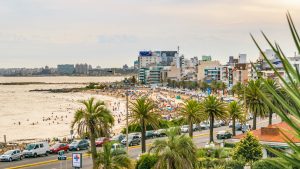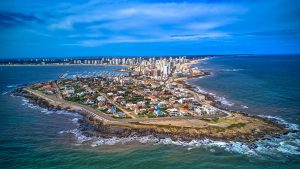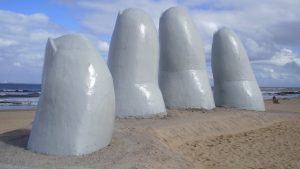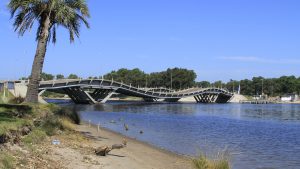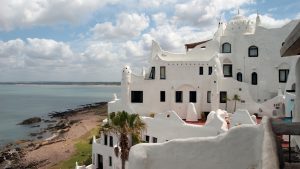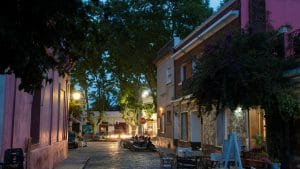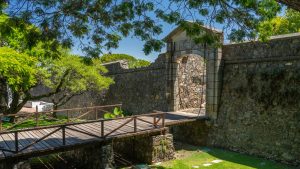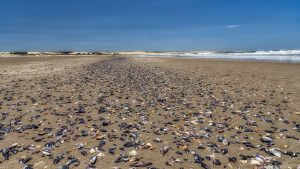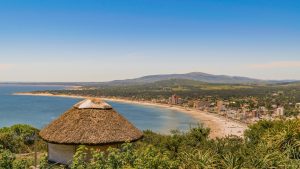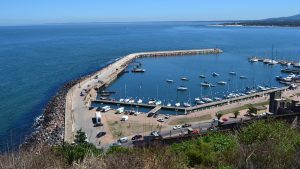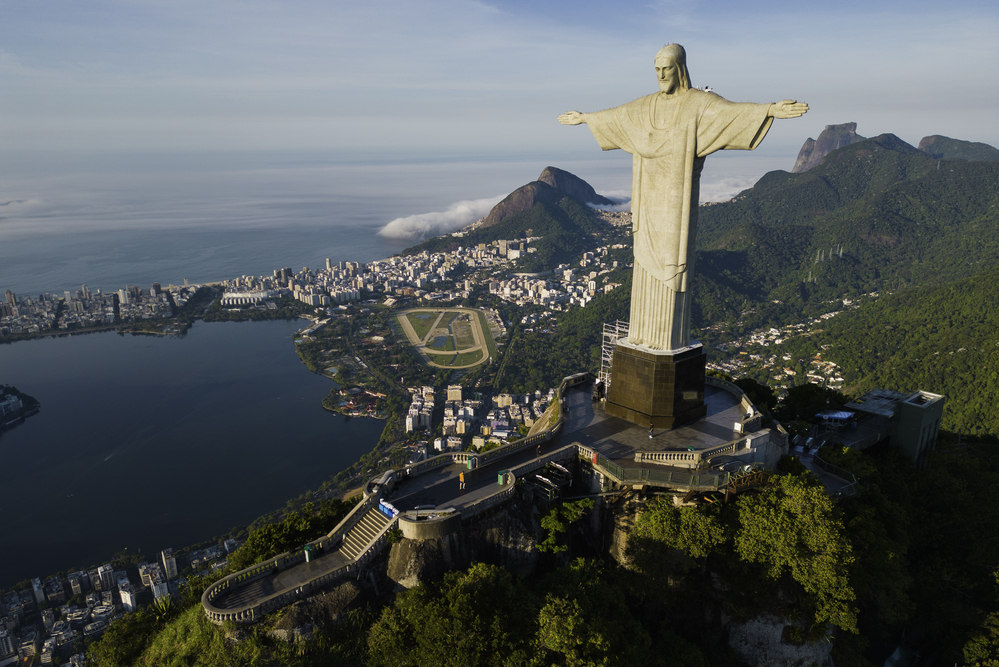If you’re planning your next trip and want to discover a charming, welcoming destination full of authentic experiences, Uruguay might be exactly what you’re looking for. Located between two South American giants — Brazil and Argentina — this small country often surprises visitors with its laid-back atmosphere, cultural richness, and diverse landscapes. From lively beaches to historic cities, as well as wineries and preserved natural areas, there’s no shortage of things to do in Uruguay. And let’s not forget, it’s the second safest country to visit in South America.
Uruguay
Before visiting a new place, learning a bit about its history helps to better understand the culture, the way people are, and even the monuments and buildings we come across along the way. And when it comes to Uruguay, its history is full of interesting chapters, struggles for independence, influences from various countries, and a people who built their identity with a lot of determination.
The Territory of Uruguay: Small in Size, Big in Diversity
Uruguay is a small country in terms of size, but full of surprises for those who choose to explore it. Located in South America, between Brazil and Argentina, it covers an area of approximately 176 thousand square kilometers — making it one of the smallest countries on the continent. But don’t be fooled: despite being compact, Uruguay offers a wide variety of landscapes, climates, and experiences.

Its territory is largely made up of plains, open fields, and gentle hills, which favor cattle raising and agricultural production — two very important activities for the local economy. That’s why it’s not uncommon to see typical rural scenes, with estancias (ranches), horses, and cowhands in the country’s interior. This connection to rural life is a strong part of the Uruguayan identity.
The country also has a beautiful coastal strip bathed by the Atlantic Ocean, with over 600 km of beaches. Some are calm and perfect for relaxing, like those in La Paloma and Cabo Polonio. Others, like Punta del Este, are livelier and world-famous.
In addition, Uruguay is crossed by important rivers, such as the Río de la Plata and the Uruguay River, which help shape the country’s climate, landscape, and even culture. The capital, Montevideo, is strategically located on the southern coast and serves as the political, economic, and cultural heart of the country.
The History of Uruguay: A Small Country with a Big Past
The territory we now call Uruguay was originally inhabited by the indigenous Charrua people, who lived in the region for centuries before the arrival of Europeans. With colonization, the country became the scene of disputes between the Portuguese and the Spanish, and was also influenced by the British and the Argentinians. For a long time, Uruguay was a strategic point due to its location between Brazil and Argentina.

The country’s independence came only in 1825, after a series of conflicts and alliances. Since then, Uruguay has built a unique path, marked by social progress, political stability (with some turbulent periods), and a rich culture that blends rural and urban life, tradition and modernity.
During your trip, you’ll see how history is present in many places: in Montevideo, in the charming Colonia del Sacramento, in museums, plazas, and even on the streets. Understanding a bit of Uruguay’s past will make your travel experience even richer and more interesting. That way, choosing what to do in Uruguay won’t be a challenge at all.
Uruguay Today: Tradition and Modernity Hand in Hand
Nowadays, Uruguay is seen as a peaceful, safe, and modern country. It manages to keep its rural traditions alive through estancias, gaúcho culture, and a strong appreciation for simplicity, while also making strides in areas such as sustainability, equal rights, and high-quality tourism. Its safety is confirmed by the website of Institute for Economics and Peace (IEP)

In every city, in every museum, in every plaza, Uruguayan history shows itself — not as something distant, but as part of everyday life. Traveling through Uruguay is diving into a rich history, full of influences and marked by the fight for freedom and justice.
In this article, we’ll show you the main things to do in Uruguay — destinations, activities, and tips — to help you plan your trip more easily and make the most of everything this amazing country has to offer.
Top Destinations
Uruguay may be a small country in size, but it’s huge in charm, culture, and natural beauty. Those who decide to explore its cities and landscapes are surprised by the variety of destinations, each with its own personality, history, and attractions. From the buzz of lively beaches to the peace of the countryside, the country offers options for all tastes.
The journey almost always begins in Montevideo, the capital. Modern and laid-back at the same time, the city combines historic buildings, a pleasant waterfront, tree-lined plazas, and a lot of culture. Walking along the Rambla or visiting the Ciudad Vieja is a great way to get a feel for the country’s rhythm.

Continuing along the coast, you’ll find the charming Punta del Este, the most famous seaside resort in Uruguay. Known for its beautiful beaches, lively nightlife, and sophisticated restaurants, it’s the favorite destination of many tourists during the summer.

If you’re looking for something more peaceful and full of history, Colonia del Sacramento is a must-stop. With its cobblestone streets, old houses, and romantic atmosphere, the city is perfect for those who enjoy walking tours and sunsets by the Río de la Plata.

Other unmissable destinations include Cabo Polonio, a rustic and magical village accessible only by special vehicles, and Piriápolis, with its combination of beach, hills, and old buildings. Not to mention the countryside and estancias in the interior, where you can experience Uruguayan rural life up close.

Montevideo
Montevideo is one of those capitals that win you over with their calm. Unlike other big cities in South America, it has a slower pace, organized streets, plenty of green spaces, and a welcoming vibe that makes any visitor feel at home. Located on the banks of the Río de la Plata, this city blends the old and the modern in a charming and authentic way.
Walking through Montevideo, it’s easy to see how the city values its history and culture. Here is a list of Things to do in Uruguay in Montevideo:
-
Stroll along the Rambla
The Rambla of Montevideo is an extensive avenue that follows the coast of the Rio de la Plata. It stretches over 20 km of boardwalk, perfect for walking, cycling, or simply sitting and enjoying the view. In the late afternoon, the Rambla fills with people to watch the sunset, which is a spectacle in itself.
-
Explore the Ciudad Vieja
The Ciudad Vieja (Old City) is the historic center of Montevideo and truly charming. There you will find cobblestone streets, old buildings, craft shops, bars, cafes, and galleries. One of the highlights is the Puerta de la Ciudadela, one of the last remnants of the city’s old wall. Take the opportunity to visit the Torres García Museum and see Uruguayan art up close.
-
Visit the Mercado del Puerto
Next to the Ciudad Vieja is the famous Mercado del Puerto, one of the best places to experience local cuisine. The highlight here is the Uruguayan asado — grilled meat, served with lots of flavor. In addition to the parrillas, you will find restaurants, souvenir shops, and lots of live music on weekends.
-
Discover the Teatro Solís
The Teatro Solís is one of the most beautiful buildings in Montevideo and one of the oldest theaters in South America. Even if you don’t attend a show, it’s worth taking the guided tour to learn about its architecture and history.
-
Enjoy the parks and green areas
Montevideo has many pleasant parks. Parque Rodó is one of the most well-known, with lakes, gardens, fairs, and even an amusement park. Parque Batlle, besides having lots of greenery, is home to the famous Estadio Centenario, where the first World Cup was held in 1930.
-
Visit charming neighborhoods like Pocitos and Carrasco
The Pocitos neighborhood is modern and lively, with great restaurants, bars, and a very popular urban beach. Carrasco, on the other hand, is more elegant and quiet, with tree-lined streets and beautiful buildings. Both are great for walking and enjoying the local lifestyle.
-
Take advantage of the museums and urban art
Montevideo has interesting museums like the Andes 1972 Museum, which tells the real story of the Andes plane crash. For those who enjoy street art, the city is full of colorful murals and creative graffiti.
Whether to enjoy a weekend, start a trip through Uruguay, or even spend a few leisurely days, Montevideo is a destination worth visiting. Enjoy the best of the Uruguayan capital.
Punta del Este
Punta del Este is undoubtedly the most famous and bustling destination in Uruguay. Known as the “South American Miami,” this coastal city combines luxury, beautiful beaches, good cuisine, and a lively nightlife. But don’t be fooled into thinking that Punta is only for those who like excitement — there is plenty to do there, whether you are a laid-back traveler or a party-goer.
If you are planning to visit Punta del Este, here is a guide with everything that should not be left out of your itinerary.
-
Take photos at the La Mano sculpture
The postcard of Punta del Este is the giant sculpture of a hand emerging from the sand, known as “La Mano” or “Los Dedos”. It is located on Brava Beach and is one of the most photographed places in Uruguay. A must-stop to start your tour!
-
Enjoy the beaches
Punta has two main shores: Playa Brava, with rougher seas, ideal for surfers; and Playa Mansa, with calm waters perfect for relaxing, sunbathing, or enjoying with children. Both have great infrastructure and are excellent for watching the sunset or walking in the late afternoon.
-
Stroll along Avenida Gorlero and Plaza Artigas
Avenida Gorlero is the main shopping street in the city, full of shops, cafes, ice cream parlors, and restaurants. Plaza Artigas, next to it, hosts a craft fair with typical products, souvenirs, and works by local artists.
-
Visit the Port and see the sea lions
The Port of Punta del Este is a great place to walk, take photos, and even see sea lions that appear there in search of fish scraps. It is also a good area to try fresh seafood in restaurants with a sea view.
-
Visit Casapueblo
A few minutes from the center is one of the most incredible places in the region: Casapueblo, a white construction with unique architecture, created by artist Carlos Páez Vilaró. Besides being a museum, gallery, and hotel, it is one of the best spots to watch the sunset in Punta.
-
Explore La Barra and its famous wavy bridge
La Barra is a trendy neighborhood with bars, shops, and beautiful beaches. The highlight is the wavy bridge over the river, which gives a fun sensation when driving over it. Perfect for a more alternative tour.
-
Enjoy the nightlife (if that’s your thing)
During the summer, Punta is buzzing at night. There are bars, clubs, and casinos for all styles. The Conrad Casino, now called Enjoy Punta del Este, is one of the most famous in South America.
Final tip: Punta del Este is busier in the summer (December to February), but outside the high season, the city is quieter and still charming. It is well worth a visit at any time of the year!
Colonia del Sacramento
Colonia del Sacramento, or Colonia del Sacramento, is one of the most charming destinations in Uruguay. Located on the banks of the Rio de la Plata, the city is known for its charming historic center, full of old buildings, cobblestone streets, and a tranquil atmosphere that captivates any visitor. Founded by the Portuguese in 1680, Colonia is a UNESCO World Heritage Site and offers a unique travel experience: it feels like time has stopped there.
If you are thinking of visiting this special part of Uruguay, here is a guide of things to do in Colonia del Sacramento!
-
Walk through the Historic Quarter
This is the heart of the city. The Historic Quarter of Colonia is an open-air museum, with cobblestone streets, preserved colonial houses, and lots of charm. Take your time: walk around, take photos, visit the little shops, and soak in the nostalgic atmosphere. At night, the yellow lighting makes everything even more magical.
-
Climb the Colonia Lighthouse
The Colonia Lighthouse is one of the main tourist attractions in the city. It was built on the ruins of an old convent and offers a beautiful panoramic view of the Rio de la Plata and the city. The climb is quick and well worth it!
-
Visit the Calle de los Suspiros
The famous Calle de los Suspiros is one of the most photographed streets in Uruguay. Narrow, with uneven stones and colorful houses, it holds many legends and stories. The origin of the name is uncertain, but the place exudes romance and mystery.
-
Explore the small museums
Colonia has several small and interesting museums, such as the Portuguese Museum, the Spanish Museum, and the Municipal Museum. They help to better understand the history of the city, marked by disputes between the Portuguese and the Spanish over the centuries.
-
Relax by the Rio de la Plata
The boardwalk by the river is great for walking, watching the sunset, or simply sitting on a bench and enjoying the view. In the summer, some local beaches like Playa Ferrando or Playa Honda are very pleasant for a swim or a picnic.
-
Rent a golf cart or bicycle
A fun and practical way to get to know the city is by renting an electric cart or a bicycle. Since Colonia is small and flat, you can explore everything at your own pace, enjoying every detail without rushing.
-
Eat well and try Uruguayan wines
Colonia has great restaurants and cafes, many with a view of the river. Be sure to try a good Uruguayan parrilla and, of course, pair it with a Tannat wine, typical of the country. For dessert, the classic Uruguayan dulce de leche never disappoints.
Final tip: Colonia is a destination that perfectly combines with a day trip from Montevideo or Buenos Aires (there are fast ferries). But if you can, stay at least one night there — the city becomes even more charming when the sun sets and everything becomes calm.
Cabo Polonio: Wild Nature and Simplicity by the Sea
Cabo Polonio is one of the most different and fascinating places in Uruguay. Located in the Rocha department, this village by the Atlantic is a true refuge for those seeking contact with nature, tranquility, and an out-of-the-ordinary experience. There are no paved streets, cars, or light poles — electricity arrived recently, and many places still run on solar power. Cabo Polonio is rustic, simple, and absolutely charming.
If you want to disconnect from the world and reconnect with nature, this is the right destination. Here are things to do in Uruguay in Cabo Polonio.
-
Enjoy the journey to the village
The adventure begins even before reaching the village. Visitors leave their cars at the Cabo Polonio National Park and continue in authorized 4×4 trucks that cross dunes, forests, and sand to reach the destination. The journey itself is an attraction — get ready for incredible landscapes!
-
Visit the Cabo Polonio Lighthouse
The Lighthouse is the most famous spot in the village. From the top, the view is simply stunning: on one side the ocean, on the other, the village surrounded by dunes and native vegetation. The climb is easy, and the view is worth every step.
-
Observe sea lions
Cabo Polonio is home to one of the largest sea lion colonies in South America. They can be seen on the rocks around the lighthouse, sunbathing or swimming. It’s a unique experience to observe them up close in their natural habitat.
-
Enjoy the beaches
The beaches of Cabo Polonio are beautiful and practically deserted. There are two main ones: the South Beach, with calmer waters, and the North Beach, with strong waves, ideal for surfers. In either, the atmosphere is peaceful, perfect for long walks or swimming in total freedom.
-
Explore the dunes
The giant dunes surrounding the village are perfect for sunset walks. The view is breathtaking, and walking there gives the feeling of being in a desert by the sea. For an even more complete experience, bring a sarong, sit down, and just contemplate the vastness around you.
-
Watch the sunset and the stars
Without light pollution, Cabo Polonio offers one of the most starry skies in Uruguay. The sunset seen from the beach or the top of the dunes is also magical. It’s the kind of place where time slows down and nature speaks louder.
-
Enjoy the rustic vibe
The village has few restaurants, simple inns, and an alternative atmosphere. Everything works at nature’s pace. It’s a great place for those who like authentic places, without rush, without luxury, but with lots of charm.
Final tip: Bring cash (not all places accept cards), sunscreen, a flashlight, and a spirit of adventure. In Cabo Polonio, less is more — and that’s what makes it so special.
Piriápolis: Charm, Beach, and History on the Coast
Piriápolis is one of the most charming destinations on the Uruguayan coast. Located about 100 km from Montevideo and 40 km from Punta del Este, this coastal city combines history, nature, and a tranquil atmosphere, ideal for those who want to relax and explore at their own pace. Unlike the bustling glamour of Punta, Piriápolis has a more retro and family-friendly style, with tree-lined streets, old buildings, and a seaside boardwalk perfect for walks.
Next, you will find things to do in Uruguay in Piriápolis.
-
Walk along the Rambla
The Rambla de los Argentinos is the seaside boardwalk that runs along the Central Beach of Piriápolis. Walking there is delightful, especially in the late afternoon when the sun begins to set and the sky fills with colors. It is also a great place to have an ice cream, watch the movement, or just sit and admire the sea.
-
Enjoy the beaches
Besides the Central Beach, there are other options like Playa Hermosa, Playa San Francisco, and Playa Grande. The waters are usually calm and ideal for families. Bring your chair, your sarong, and enjoy the tranquil atmosphere of Piriápolis.
-
Climb Cerro San Antonio
Cerro San Antonio is the city’s postcard. You can go up by car, on foot, or by the famous cable car. From the top, the panoramic view of the city and the sea is wonderful. At the top, there is a small chapel, a snack bar, and a lookout perfect for photos.
-
Visit Castillo de Piria
Castillo de Piria was the former residence of Francisco Piria, the founder of the city. Today, the castle functions as a museum and tells a bit of the local history. The place is surrounded by gardens and has a mystical air. The visit is free and worth it for those who like architecture and history.
-
Hike the hills
For the more adventurous, the region has other elevations like Cerro del Toro and Cerro Pan de Azúcar, the latter with a natural park at the base and a giant cross at the top. The trails are rewarding and ideal for nature lovers.
-
Taste the local cuisine
In Piriápolis, you will find many restaurants with typical Uruguayan dishes, such as chivito, parrilladas, and fresh seafood. Be sure to try a milanesa al pan or have a Uruguayan wine at a seaside dinner.
-
Relax with the tranquil atmosphere
Piriápolis is ideal for those who want to rest. Even in high season, the pace there is calmer. The city also attracts many Argentinians and Uruguayans looking for a quieter environment for family vacations.
Extra tip: If you are traveling by car, Piriápolis is a great base to explore other places in the region, such as Punta del Este, Punta Ballena, and even Montevideo.
Best Time to Visit
Uruguay is a charming country that can be visited all year round, but the best time will depend on what you are looking for in the trip. With well-defined seasons, the Uruguayan climate offers different experiences throughout the year — from sunny beaches to more relaxed and cultural tours.
If your goal is to enjoy the coast, like the famous beaches of Punta del Este, José Ignacio, or La Paloma, the ideal is to travel in the summer, between December and February. This is the high season, with pleasant temperatures (around 25 to 30°C), lots of sun, parties, bars, and restaurants open, especially in coastal cities. However, as it is the most popular period, prices tend to be higher and destinations more crowded.

For those who prefer a milder climate and less hustle, the months from March to May (autumn) and September to November (spring) are great. The temperatures are cooler, between 15 and 25°C, ideal for cultural tours, walks through historic cities like Colonia del Sacramento, visits to wineries, or exploring Montevideo at a leisurely pace. It is a charming and more economical time, with fewer tourists.
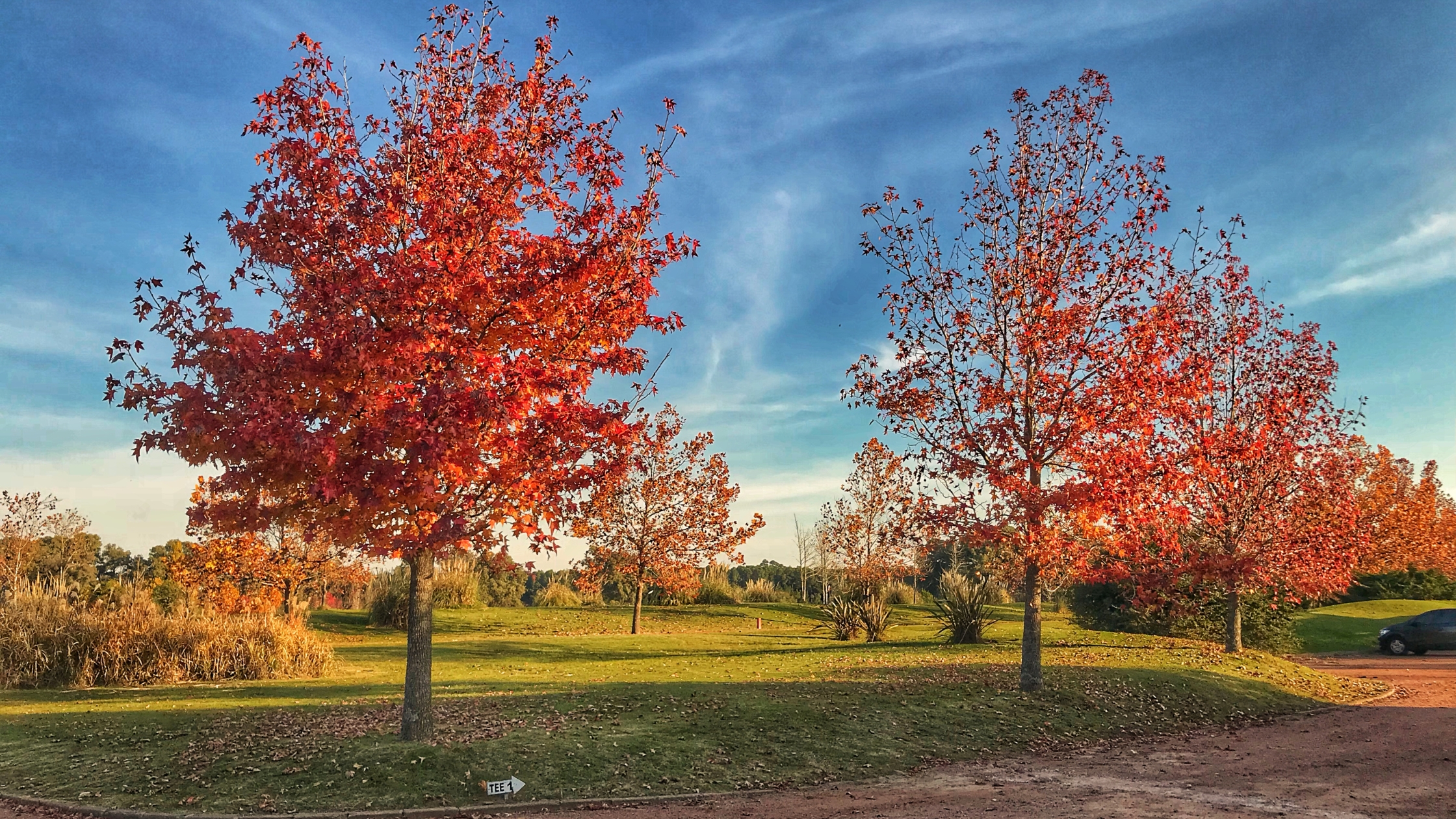
Winter, from June to August, is cold, with temperatures between 5 and 15°C, especially in the south of the country. Although it is not the ideal time for the beach, it can be interesting for those who want to enjoy wines, typical cuisine, and cultural events.
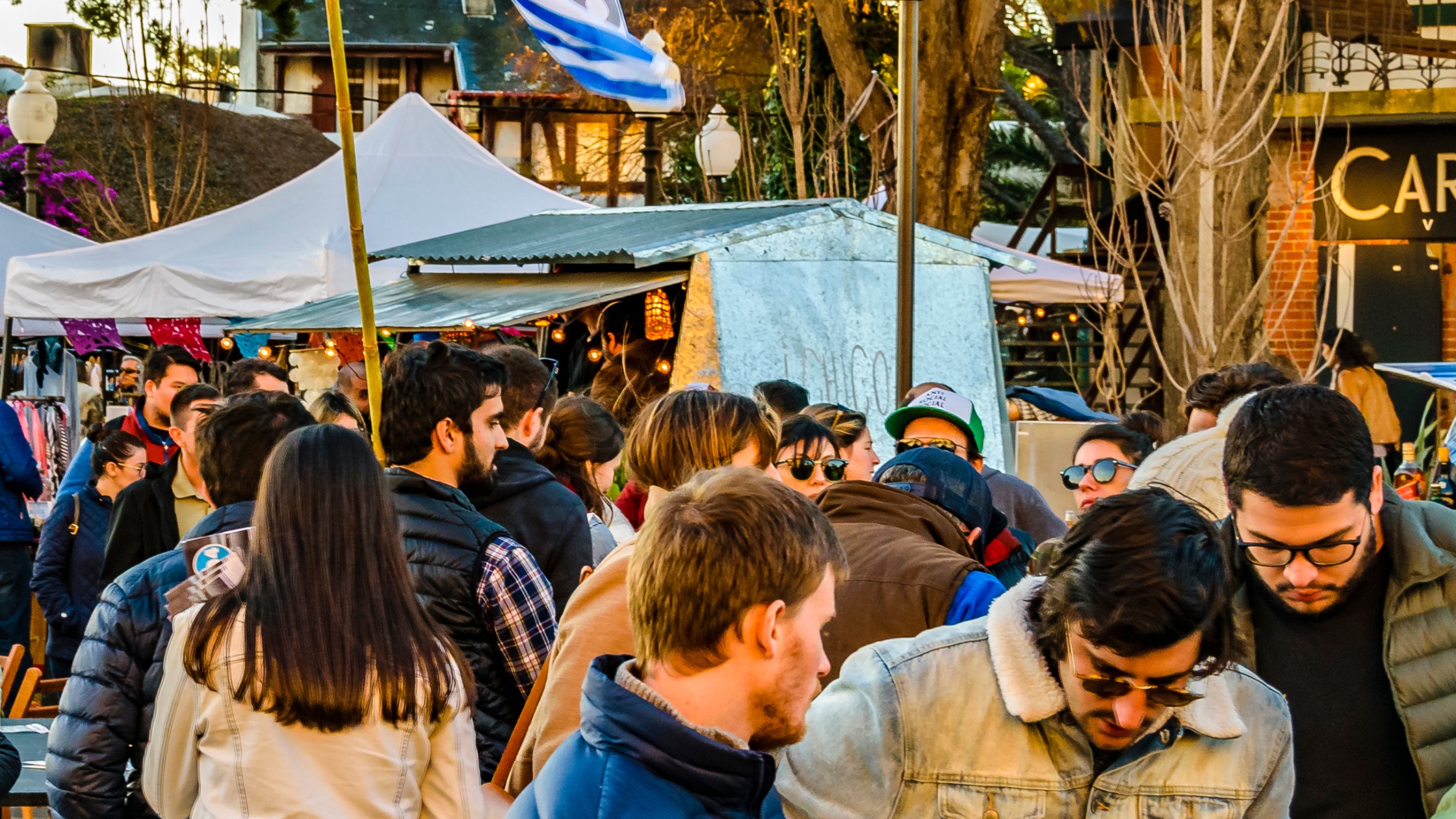
In summary, the best time to visit Uruguay depends on the style of your trip. Want warmth, beaches, and activity? Go in the summer. Prefer tranquility and mild weather? Opt for autumn or spring. Whatever your choice, the country has a lot to offer!
How to Get to Uruguay
Getting to Uruguay as a foreigner is easier than many imagine. The country has good infrastructure to receive visitors, whether by plane, car, bus, or even boat. The most common way to enter is by air, but there are other options depending on where you are coming from.

The main air gateway is Carrasco International Airport, located in Montevideo, the capital. It receives direct flights from various South American countries, such as Brazil, Argentina, Paraguay, and Chile, as well as connections with Europe and North America. If you are coming from further away, you may need to make a connection in cities like Buenos Aires, São Paulo, or Panama.
If you are traveling from a neighboring country, such as Brazil or Argentina, there is the possibility of entering by car or bus. The roads are good, and there are several border points. From Brazil, the cities of Santana do Livramento (RS) and Chuy (RS) have direct borders with Uruguay. In these cities, it is common to see Brazilians and Uruguayans crossing the border on foot or by car.
Another widely used way is by boat, especially for those in Argentina. There are fast and comfortable ferries that connect Buenos Aires to Montevideo or Colonia del Sacramento. The crossing takes about 1 to 3 hours and is a practical and beautiful option.
Regardless of the mode of transport, it is important to have your documents in order and, if necessary, the Carta Verde insurance in case of entry by car. Uruguay is a welcoming destination with easy access — ideal for those seeking a peaceful trip through South America.

